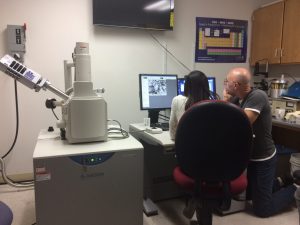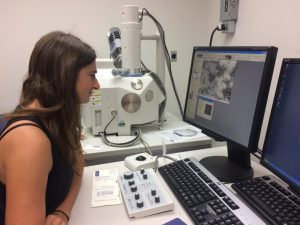Now that you have been exposed to what types of images a Scanning Electron Microscope or SEM, can produce, it might be time to understand a little bit about what the SEM is and how it works.
A SEM is essentially an extremely well magnified with high resolution microscope. At some point in all our lives we have been exposed to microscopy. It doesn’t matter whether it was to manipulate sunlight on a hot day to burn a bug or in a high school biology class. The point is, microscopy essentially takes something you are interested in and lets you look at it from a new newer but smaller perspective.
In the science world, there are a variety of different microscopes that use a handful of mechanisms. The compound microscope and the dissection microscope are two of the most common. These microscopes use visible light to look at the specimen. Although the resolution is not great, the magnification allows a scientist to see down to the cell level. The confocal microscope uses a laser light that scans across the specimen. The image that is created from the scan is then transferred to a computer where the scientist can do further analysis. The SEM and the Transmission Electron Microscope or TEM both use electrons, or negatively charged particles, to create an image. When using the SEM, the pedestal with the sample is coated with conductive material such as gold or graphite. The electrons from the beam of the SEM bounce off the sample creating backscatter electrons that are used to make an image in 3D. The TEM allows for some electrons to pass through the sample so that the scientist can look at different layers within the sample. Both the SEM and the TEM have very high magnification and resolution, as I am sure you have seen in some of our previous posts. This technology along with add on tools such as the Energy Dispersive X-Ray Analysis tool, or EDX, allows scientists to look at specimens at the atomic level, making species identification and elemental composition of a specimen precise.
The best part of the SEM is getting to see relatively anything at its structural level. We can experiment with just about anything and explore its inner workings within minutes. Even though our field of study lies with the ocean, our curiosity and excitement over the use of the SEM has encouraged us to explore all realms around us including the fly on the windowsill. Who knows what we will look at next!



